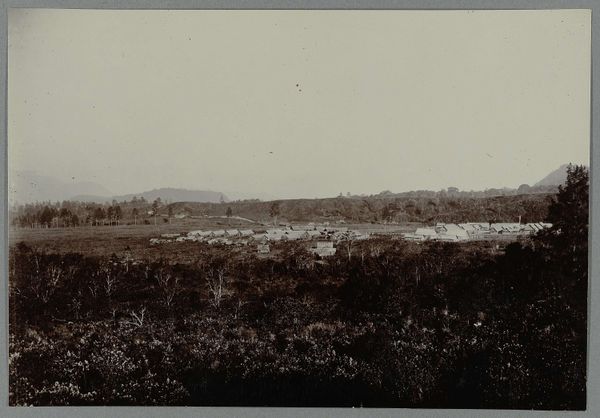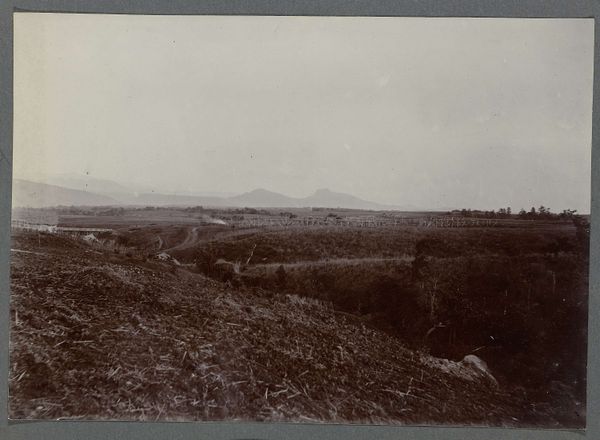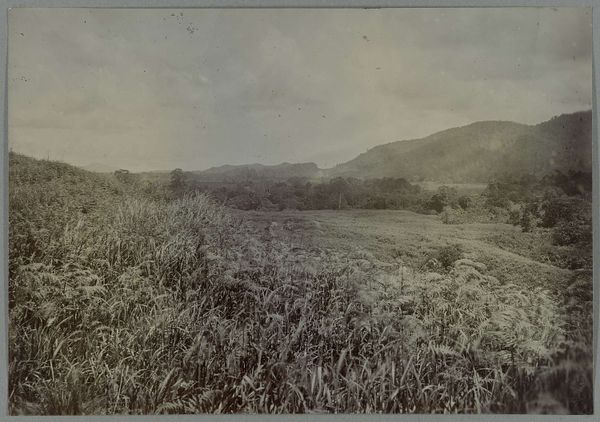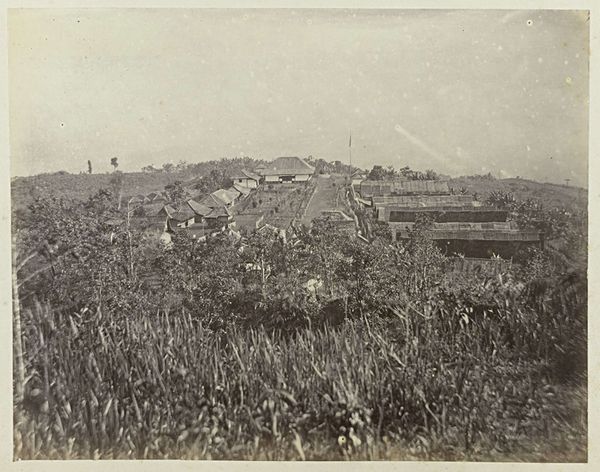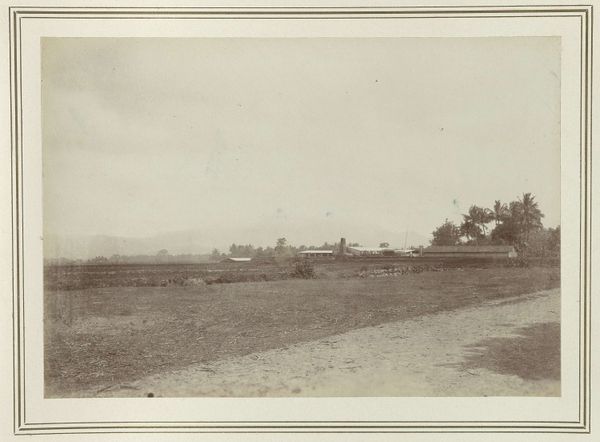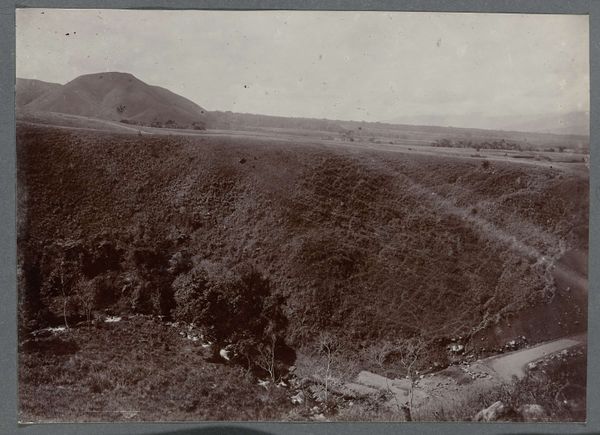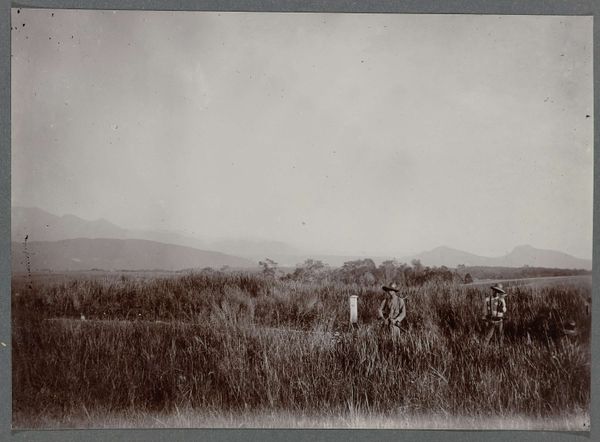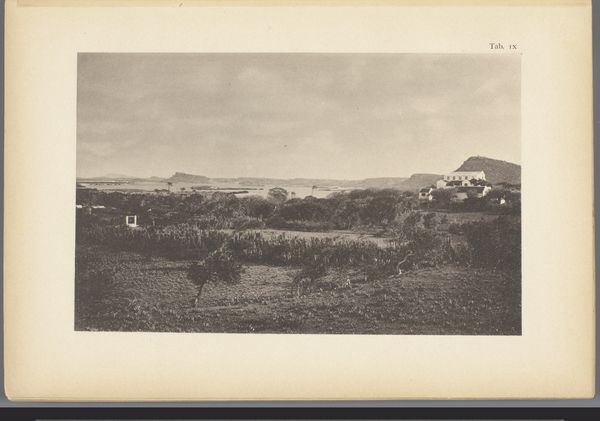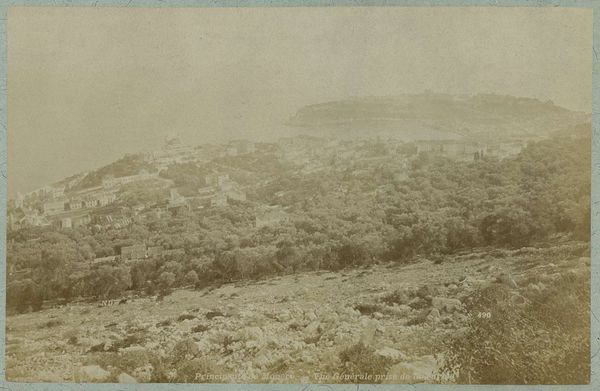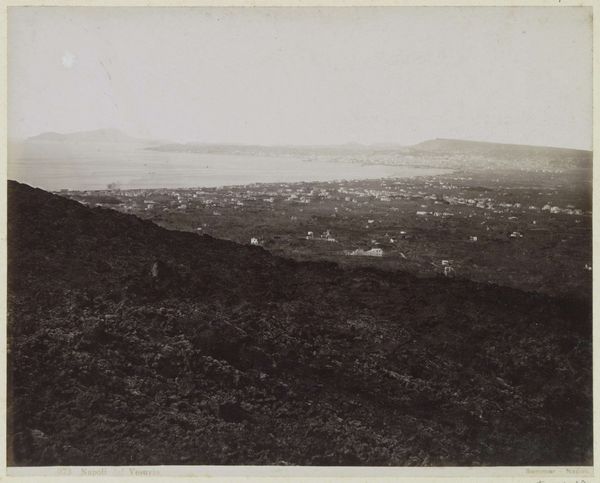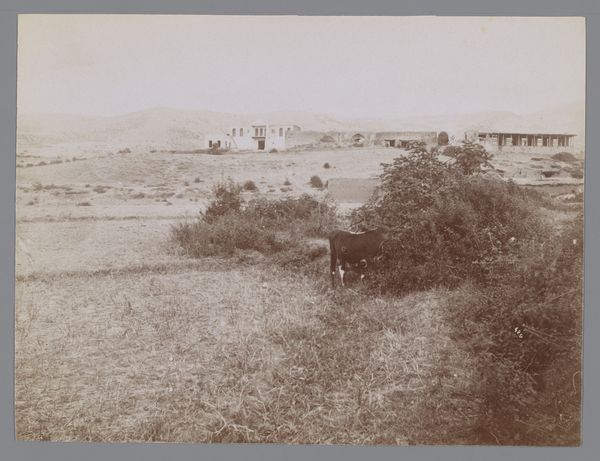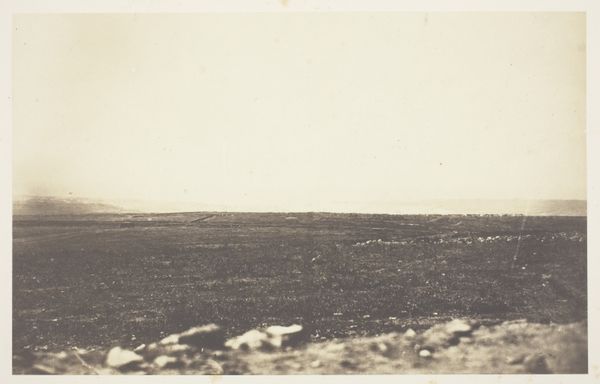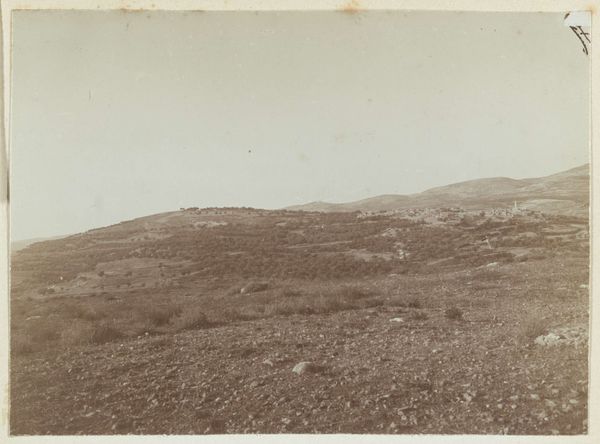
print, photography
# print
#
landscape
#
nature
#
photography
#
modernism
#
realism
Dimensions: height 138 mm, width 200 mm
Copyright: Rijks Museum: Open Domain
Curator: This photograph, simply titled "Tijdelijke bivak bij Blangrakal," roughly translated as "Temporary Bivouac near Blangrakal," offers a glimpse into a landscape, sometime between 1903 and 1913. It's attributed to an anonymous photographer, captured in tones of grey through print. Editor: Immediately, I'm struck by the overwhelming sense of…stillness. The muted palette contributes, but it's more than that. The land feels heavy with unspoken history, almost melancholic. What stories are embedded in this seemingly quiet place? Curator: The visual language speaks of a profound connection to the land. Notice the layering—from the tall grasses dominating the foreground to the distant silhouettes of hills and the suggestion of dwellings nestled amongst them. This invites meditation, it emphasizes the idea of settlement or travel. It echoes with tales of transience. Editor: Yes, the dwellings – they seem dwarfed, almost swallowed, by the expanse of the natural landscape. There’s a sense of vulnerability. And who are these temporary occupants? Considering the period, is this connected to colonial exploration and exploitation? A bivouac isn't exactly a leisurely holiday setup. Curator: That's an essential thread to pull. "Bivouac," carrying connotations of impermanence and adaptation, would’ve been understood with different meaning at the time. The symbol of a ‘temporary camp’ invites speculation on shifting power dynamics; not only literally by a community resting when journeying across nature but on the communities' relation to colonial settlements. This scene offers a mirror, in reflecting the ever changing landscape of human relations, power, land and temporality, it reflects not only those themes of the past, but those mirrored still in the present day. Editor: Exactly. And to consider photography itself as a tool of colonialism – these images were often used to document and claim territory, framing landscapes as empty and available for the taking, obscuring the presence and rights of indigenous populations. This is how identity and space gets shaped, reinforced. Curator: An incredibly valid and important critical point; photography itself has that duality. By depicting nature, we have to observe who exactly this served. Editor: Precisely. I feel this work encourages an observation of cultural narratives as we interpret them across temporal landscapes. It begs a rereading. Curator: It pushes us to reflect upon, not only how temporary things such as journeys and power influence spaces, but also how people have reflected upon how nature shapes us and communities across both linear and historical eras. A powerful image, silently laden with discourse. Editor: I agree. It's a reminder that landscapes are never neutral; they're always embedded with socio-political narratives waiting to be unearthed.
Comments
No comments
Be the first to comment and join the conversation on the ultimate creative platform.
